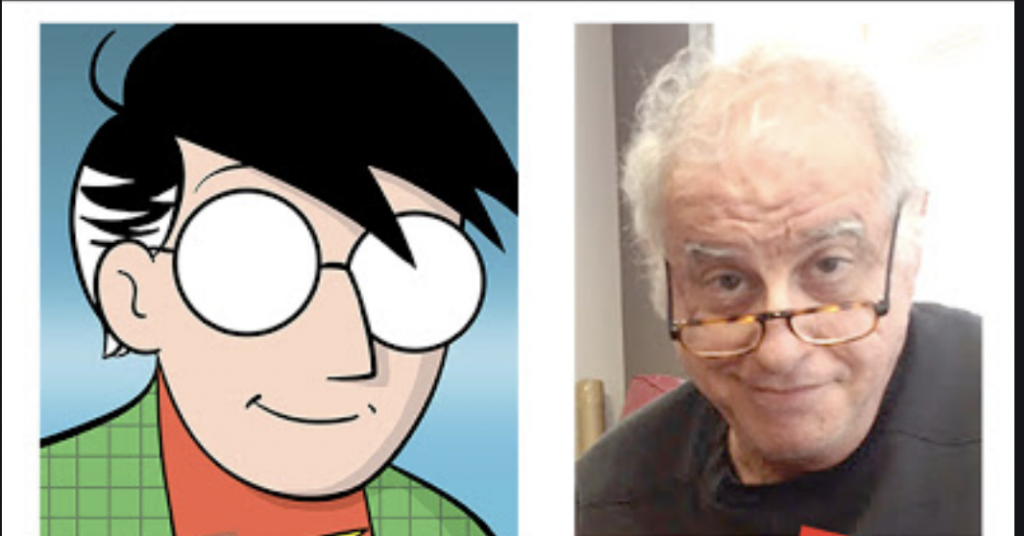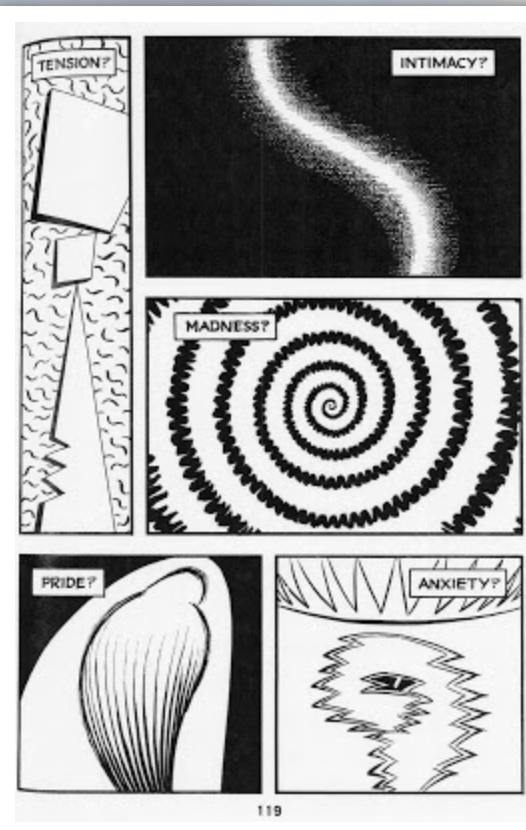Comic:
A set or series of images, with or without text or written narrative, that outline a story. There is no set format to comics, all are differing and unique in their own form.
“Juxtaposed pictorial and other images in deliberate sequence, intended to convey information and/or to produce an aesthetic response in the viewer.”
Cartoon:
“Amplification though simplification.”
An art form that exaggerates and simplifies a drawing down to its most valuable characteristics. Comics can be both-hyper specific (ie. a character simplified down to beady eyes, a large hook nose, birth mark over their mouth) and extremely general (ie. Calvin and Hobbs) to help the viewer connect in varying degrees to the characters.

Gutter:
“That space between the panels.”
The space between drawings that communicates a shift, and works alongside closure to allow the viewer an understanding of a change in the story. See Panel to Panel Transitions to see what changes can occur.

Closure:
“Closure is an agent of change/time/motion in the medium of comics and the viewer is a willing collaborator.”
“Mentally completing that which is incomplete based on past experience.”
Most comics will vary in how scenes change from one to another. Closure is what happens when the reader bridges the gap using information or observed facts from the story to, in their mind, complete what happens in between frames. Essentially, the viewer processing is acting the ampersand between cause & effect.
Ie. An action. In frame one, we see Fred winding up for a punch. In frame two, we see his victim dazed on the floor with stars around his head. Although we didn’t see Fred hitting the other man, we know it happened due to the common trope of dizziness.

Panel-to-Panel Transitions
How aspects of the comic change in between panels. This can be a change in time, perspective, location, etc. See below for common panel transitions.
Moment-to-Moment: A heartbeat between panels, with very little time passing in the change.
Action-to-Action: Panels communicate large or small parts of actions in a scene.
- Ie. Frame one: Fred winding up for a punch. Frame two: Fred’s fist flying through the air. Frame three: Fred’s fist making contact with somebody’s face.
Subject-to-Subject: The change is communicated by switching subjects but staying on the same scene or idea. Think action, reaction.
Scene-to-Scene: Change involves larger changes in time and location/space.
Aspect-to-Aspect: Focuses on describing a place, idea, or mood by switching subjects/settings/views. For example, we can describe New York in different panels showing buisiness men, small apartments, and homeless men in front of a brick wall. We’re still focusing on the same thing, New York as a whole, but visually describing different aspects of it.
Non-Sequitur: “No logical relationship between panels.”
Bleed:
“When a panel runs off a page.”
The frame of a panel is released and set free onto the page. It can travel off the page completely, or fill up parts of it. Especially great for dramatic impact.

Motion Lines:
“Zip-ribbons. Motion lines represent objects moving through space.”
Artistically licensed lines that communicate motion and change.

Synaesthetics:
“Art that might somehow unite the senses and in doing so, unite the different artforms which appealed to those different series.”
Artistically licensed stylization that describes an abstract feeling or emotion by visually manipulating one of the 5 senses.
Representing abstract ideas or feelings in a
Comics use “living lines” that can represent other senses or feelings without having to actually use that sense.
